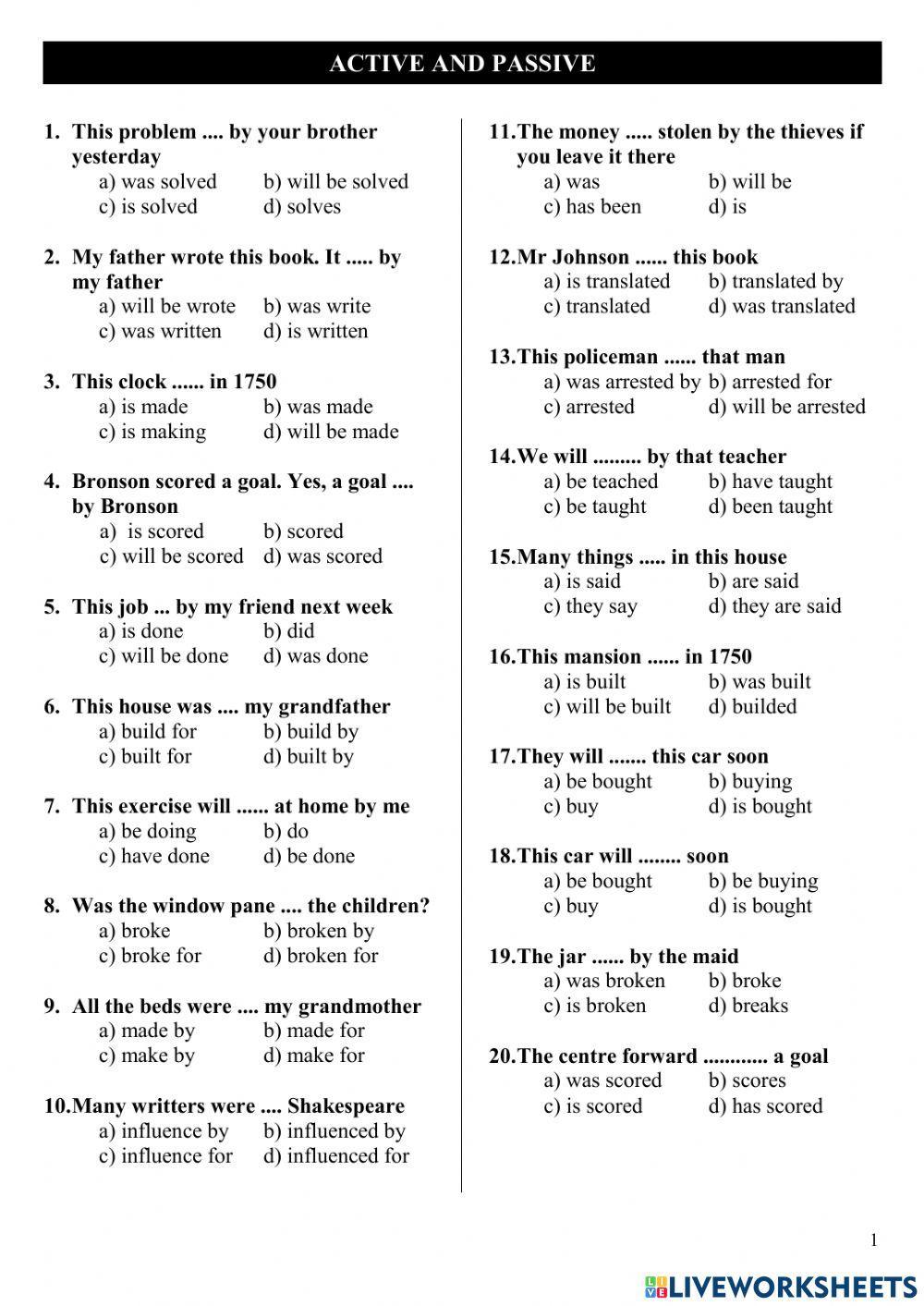Miembro desde hace
2 years 7 monthsEdad: 9-18
Level: Pre-Intermediate
Idioma: English
(en)
ID: 1756508
27/12/2021
Country code: VN
Country: Vietnam
Tema principal: Passive and Active (1661926)
From worksheet author:
Passive and Active
Worksheet description:
Objective Explanation:
The main goal of this worksheet is to help students understand and differentiate between passive and active voice in the English language. By completing the exercises, students will enhance their knowledge of grammatical structures and improve their ability to recognize and use passive and active forms in writing and speaking.
Content Overview:
The worksheet focuses on passive and active voice, presenting sentences where students need to identify whether the sentence is in passive or active voice and make the appropriate changes. Through examples like "This problem... by your brother" or "My father wrote this book. It... by my father." students will practice converting between passive and active voice, reinforcing their understanding of the two concepts.
Language and Educational Level Context:
Tailored for students studying English as a Second Language (ESL), this worksheet is designed to cater to learners at a beginner to intermediate level. The examples and exercises are structured in a way that is clear and accessible to students who are still building their English language skills, allowing them to grasp the nuances of passive and active voice effectively.
Subject Relevance:
Embedded within the broader field of ESL, this worksheet is an essential tool for students looking to enhance their language abilities. Understanding passive and active voice is crucial for effective communication in English, whether in writing or speaking. By mastering these concepts, students can improve the clarity and precision of their language use, ultimately strengthening their overall proficiency in English.
Instructions:
The instructions provided on the worksheet prompt students to identify whether a sentence is in passive or active voice, and then apply the appropriate changes to convert it to the other voice. By engaging with sentences like "This clock... in 1750" or "Mr Johnson... this book," students are challenged to recognize the structure of each sentence and modify it accordingly. This hands-on approach encourages active learning and reinforces the concepts of passive and active voice in a practical manner.
The main goal of this worksheet is to help students understand and differentiate between passive and active voice in the English language. By completing the exercises, students will enhance their knowledge of grammatical structures and improve their ability to recognize and use passive and active forms in writing and speaking.
Content Overview:
The worksheet focuses on passive and active voice, presenting sentences where students need to identify whether the sentence is in passive or active voice and make the appropriate changes. Through examples like "This problem... by your brother" or "My father wrote this book. It... by my father." students will practice converting between passive and active voice, reinforcing their understanding of the two concepts.
Language and Educational Level Context:
Tailored for students studying English as a Second Language (ESL), this worksheet is designed to cater to learners at a beginner to intermediate level. The examples and exercises are structured in a way that is clear and accessible to students who are still building their English language skills, allowing them to grasp the nuances of passive and active voice effectively.
Subject Relevance:
Embedded within the broader field of ESL, this worksheet is an essential tool for students looking to enhance their language abilities. Understanding passive and active voice is crucial for effective communication in English, whether in writing or speaking. By mastering these concepts, students can improve the clarity and precision of their language use, ultimately strengthening their overall proficiency in English.
Instructions:
The instructions provided on the worksheet prompt students to identify whether a sentence is in passive or active voice, and then apply the appropriate changes to convert it to the other voice. By engaging with sentences like "This clock... in 1750" or "Mr Johnson... this book," students are challenged to recognize the structure of each sentence and modify it accordingly. This hands-on approach encourages active learning and reinforces the concepts of passive and active voice in a practical manner.
Share / Print Worksheet

